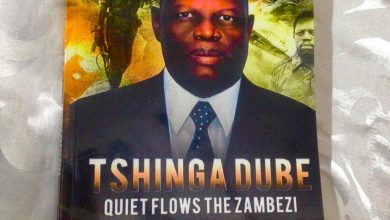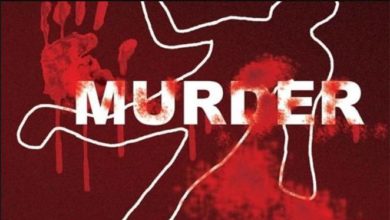Gukurahundi, tribalism inspire powerful protest art

A controversial mural that was painted on the wall of a Bulawayo City Council (BCC) property over the weekend has been described as a powerful piece of protest art and a reminder of the need to discuss certain historic events, scholars and analysts have noted.
The mural, showed King Lobhengula Khumalo intimately holding spirit medium Nehanda Charwe Nyakasikana.

The mural was accompanied by the inscription “Love is greater than Shona and Ndebele, Africans let’s unite”.
Council staff on Monday afternoon took down the painting but on Tuesday morning it was ‘replaced’ by another which read, “Gukurahundi- We will never forget”.
Critical Studies scholar, Khanyile Mlotshwa, told CITE in an interview that protest art is very much alive in Zimbabwe, especially in Bulawayo.
Mlotshwa said the artist proved that he is a critical thinker and brought together what otherwise looks like disparate texts and histories to fix a strong message whose underlying point is the need for peace.
“In many ways protest, art has always been alive in Zimbabwe and especially in Bulawayo. The work of Cont Mhlanga, in the early years of independence, was regarded so critical that one minister felt it would be good that it is performed in parliament for the honourables to see and hear what the people out there thought,” he said.
“Protest poetry is also very alive. In recent years, and particularly in visual arts, we will recall Owen Maseko’s exhibition that was closed down leading to the closure of a section of the Bulawayo Art Gallery for some months. In a sense that part of the art gallery was turned into a crime site just like Matabeleland is a crime site as far as the issue of Gukurahundi remains unresolved.”
Mlotshwa noted that the mural aimed to communicate the message that there is a need for Ndebele and Shona people to make peace.
“Those of us committed to the call for African unity, how do we think that is possible if we, as Ndebele people, cannot share a cup of tea with Shona people? That was the simple message of that piece of art; that there are bigger wars than the Ndebele/Shona problems. In a nutshell, Ndebeles and Shonas should make love and not war,” he said.
Another media scholar Dr Mphathisi Ndlovu explained that the role of art is to reflect people’s lived realities and experiences bringing to the fore their hopes, fears and aspirations and in this case the piece brought to the fore the divide that has existed between the Ndebele and the Shona people.
“Art is special in that it articulates the grievances of the people, especially those that they feel are not being given enough attention in the mainstream media. For people to appreciate such work of art, we should be able to tie it to the past socio-political and economic environment,” he said.
“As it stands right now, one may argue that this message may have been preaching peace and harmony between the two ethnic groups but was then countered by one which said Gukurahundi, we will not forget. It is therefore important for people to probe deeper into the root causes for these challenges.”
An analyst who spoke on condition of anonymity noted that the mural reminded people how much of a sensitive community Bulawayo is, based on the reaction to the mural.
“Such messages can be received differently by people. Yes, it may be a call for unity, but how can you call for unity without peace? It may be a call for peace, how can you call for peace without acknowledging that there was war?” the source noted.
“The response to the mural seemed like a provocation. When we look at history, Lobengula was a King. His status is well known, but the same cannot be said about Mbuya Nehanda, she was described as a spirit medium.
“If we are to be honest with ourselves then we should acknowledge that there is a conversation that must be had about what happened in the past. We can’t talk about the present and the future without being honest about what happened in the past.”
The source highlighted that the council can be justified for taking down the mural because the city by-laws do not allow such but noted that it is important to set up spaces within communities that can be used to put up graffiti.
“It would be commendable for the council to set aside spaces where artists can express themselves in a unique way. For example, the recent incident showed that various messages can be interpreted differently. The manner in which they are packaged is very important as it is what triggers a response,” he said.
Mlotshwa also emphasised that it is important for Bulawayo, as the cultural hub, to have various spaces that allow people to express themselves in an artistic way.
“Not only must BCC have these spaces but also people who have public spaces must open it for graffiti and other art pieces. Bulawayo is regarded as the arts capital of the country and it is shocking that there is no such vibrancy as far as public art is concerned. The Bulawayo city council, in its arts policy, must seriously think about how it can support public arts, such as graffiti,” he said.








